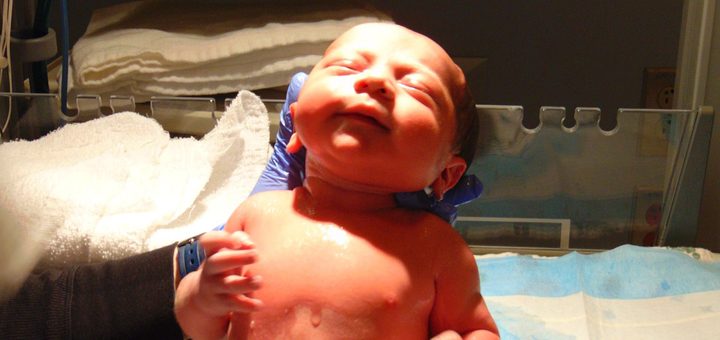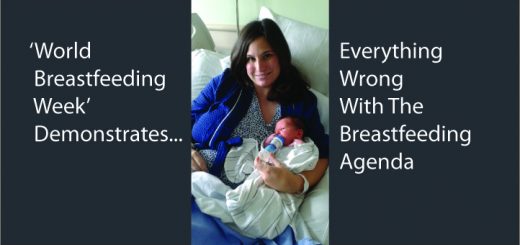Dear WHO: Can We Stop Pretending That C-sections Are Bad?

I believe that the time has come for a reassessment of cesarean sections (“c-sections”) and the bad press that they are constantly given. The bottom line is that c-sections save lives, of both mothers and infants. I myself have three children; at least two of them would not be here if a c-section had not been performed. On this last go-round, I have my doubts about whether I’d still be here if a c-section had not been performed. But regardless of its apparent necessity in an increasing amount of births, c-sections continue to be eviscerated by other mothers, on-line, in countless articles, and by the World Health Organization (“WHO”).
As an initial matter, the WHO does not seem to denigrate c-sections as much as it seeks to find a magic optimal rate for their performance. In 2015, for example, the WHO set the ideal target rate at 10-15%. (Currently, America has a rate of c-sections at around 33%.) Frankly, I think that assigning an across-the-board rate to anything is just a recipe for trouble, because it doesn’t take into account that different populations have different demographics. But is having a higher rate necessarily troublesome or unwarranted? I believe the answer is a resounding “no”.
Let’s start by looking at the reasons c-sections are generally performed. One of the main reasons includes preeclampsia, a health condition that affects at least 5-8% or pregnancies. It is a serious condition that affects the health of the mother and unborn baby, causing complications including high blood pressure stroke, and death. One medical study, printed in 2013, noted that the rates of preeclampsia have been rising. This study noted that in 2003, due to advanced maternal age, women were over six times more likely to have severe preeclampsia than they were in 1980. The study also noted that rising obesity rates likely contributed to the increasing severity.
These findings should not be surprising. In America at least, the average maternal age and obesity rates have steadily been rising. Looking at obesity rates for a moment, about 75% of women in American are overweight and about 36% are obese. In addition to preeclampsia, obese women are susceptible to a myriad of problems during pregnancy that could necessitate c-sections, including, but not limited to, gestational diabetes, pre-term labor, stillbirth, and heart and lung complications secondary to sleep apnea. It can also cause infections during pregnancy and blood clots. In addition, obesity can have a detrimental effect on the fetus, including large for gestational age, also known as macrosomia.
Any one of these conditions secondary to obesity could necessitate having a cesarean. Gestational diabetes, for example, can cause high blood pressure or preeclampsia and also increases the likelihood that the infant, who is getting additional glucose, will have macrosomia. The rate of gestational diabetes in 2007-2010 was estimated at about 9.2% and is a figure that is steadily rising. In fact, the 2007 study noted that the rate of gestational diabetes had risen in the past twenty years from 10% to 100% depending on the race and ethnicity. Of course, not every woman with gestational diabetes is going to require a c-section. But common sense suggests that if there are more pregnant obese women, more pregnant women with gestational diabetes, and more large for gestational age babies, there should be more c-sections needed, not less.
Turning to age factors, it is common knowledge that advanced maternal age (“AMA”) pregnancies (those with women aged 35 and over) face increased risks of the aforementioned complications such as gestational diabetes and preeclampsia. It is also a fact that birthrates are rising among older women. In fact, from 1990 to 2008, the percentage of births to women aged 35 and over increased by about 64%. This includes a 47% increase for women aged 35-39 and an 80% increase for women aged 40-44. Again, since one of the underlying factors for causing complications requiring cesareans is increasing, it would be logical to again conclude that the c-section rates should be going up, not going down.
Studies suggest, therefore, that the rates of obese or overweight pregnant women, and the rates of pregnant women of advanced maternal age, are rapidly rising. Both of these factors, whether co-morbid or separate, increase the likelihood of pregnancy complications that could necessitate c-sections. Why, then, are we trying to slash c-section rates, which these factors make necessary, at the same time? Of course, one of the reasons is that in the last ten years we have seen a general push for “natural birth”. (As an aside, the whole terminology of “natural” is a misnomer, because unless a woman is delivering the baby from her head like an alien, we should have reached a point in society where c-sections and vaginal deliveries are both the norm.) These proponents tend to treat any medical assistance like an enemy, with c-sections being lauded in some circles as the pinnacle of failure. But in many situations involving the co-morbid factors set above, vaginal births are not the preferred delivery method. In the case of severe preeclampsia, elective c-sections are associated with a better perinatal outcome than vaginal delivery or emergency c-sections. Larger babies run the risk of complications including stillbirth. In this scenario as well, c-sections would be the preferred method of delivery.
Despite the fact that c-sections have been more than warranted and have saved countless lives, they still continue be treated with begrudging disdain and those that receive them often ridiculed or shamed for the “lesser” option. But although countless studies have been done in the last twenty years to bastardize the cesarean, the research continues to show that the delivery method has very little impact on the infant’s health. Despite countless attempts to try and associate cesareans with childhood afflictions, like obesity, and failed immunity freebies, like the ostensible gut biome, no solid research has been able to conclusively make those claims. Nor does it affect emotional outcomes, such as bonding. Ibid. Conversely, some studies have found children born by cesarean to be in overall better health by age two to three and to have better social skills by age six to seven. Others have noted that children born by c-sections have higher IQ’s than those born vaginally (although the difference is insignificant when adjusted for co-factors). At a minimum, the research shows that c-sections have very little impact on infants after birth.
Let’s be clear: I am not advocating for c-sections in every circumstance and for every pregnancy. I am not even saying that it should be the preferred method of delivery. But for the WHO to assign a random number targeting a decrease in cesareans when all facts, at least in America, demonstrate an increasing population that needs them, shows that there is something wrong. C-sections are, in many instances, lifesavers. Eviscerating them, and shaming the women who have them, is a disservice to us all. Instead, we should embrace them for what they are: one of two perfectly acceptable delivery methods, with the end goal being a healthy mother and a healthy newborn. And that target rate should always be one hundred percent.
Wendy Marcus
I am mediocre mom!
Latest posts by Wendy Marcus (see all)
- THE ROAD TO HELL IS PAVED WITH LEGOS - April 25, 2017
- Examining Equality in the Practice of Law: The Scales of Justice are Still Not Balanced - April 8, 2017
- Dear America:I think it’s time to consider a divorce - January 26, 2017
















